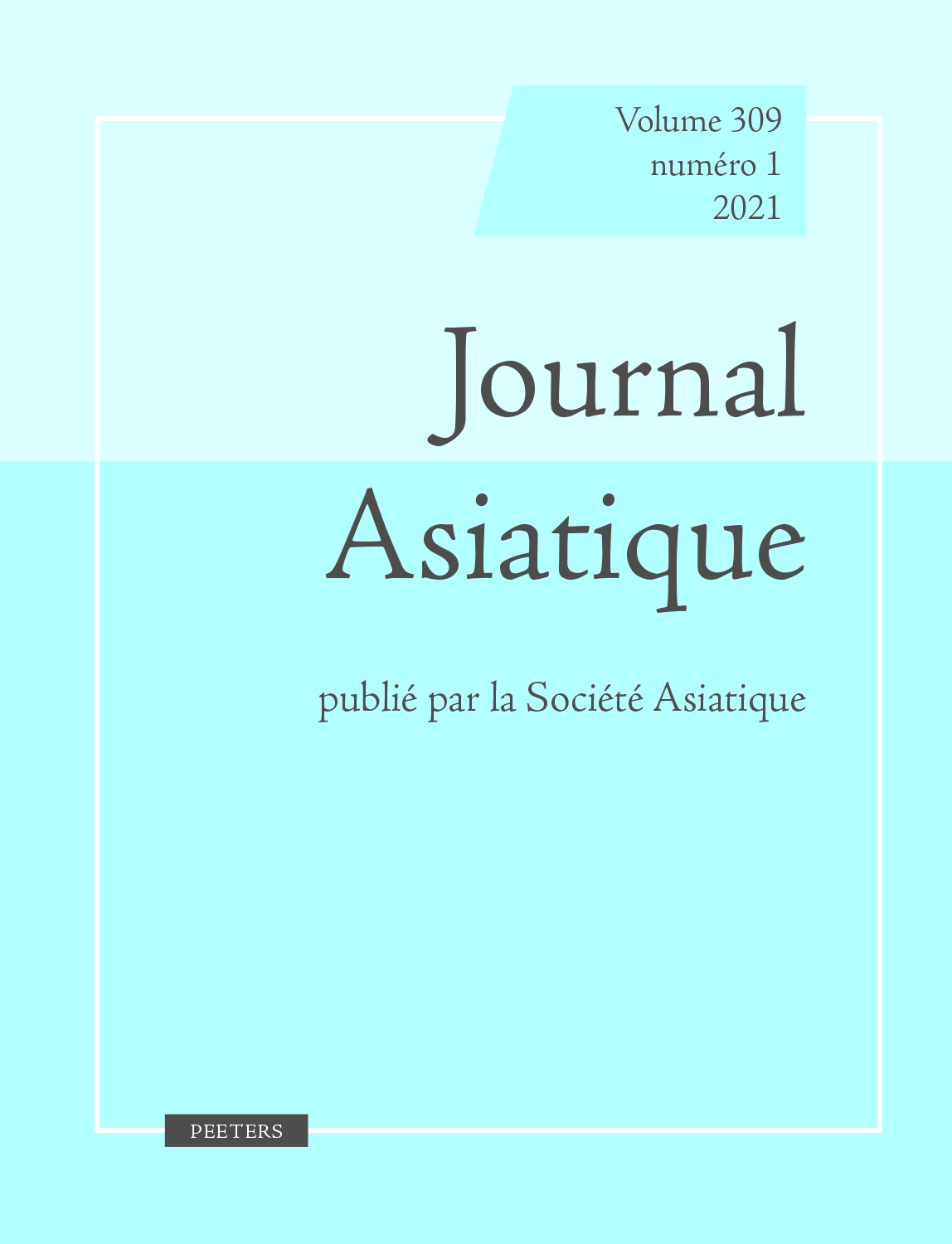 previous article in this issue previous article in this issue | next article in this issue  |

Preview first page |
Document Details : Title: La question de l'Ātman dans la Mitākṣarā de Vijñāneśvara Subtitle: «Chasser chiens et corbeaux...» Author(s): SMETS, Sandra Journal: Journal Asiatique Volume: 300 Issue: 2 Date: 2012 Pages: 475-526 DOI: 10.2143/JA.300.2.2961390 Abstract : La Mitākṣarā, composée par Vijñāneśvara au début du XIIe s. de notre ère, est l’un des commentaires les plus célèbres de la Yājñavalkyasmṛti (YS). Ce compendium constitue un véritable réservoir d’informations, issues de divers matériaux, et développe considérablement les idées présentées dans la Smṛti. La section de la Mitākṣarā à laquelle nous consacrons le présent article commente la théorie de l’ātman telle qu’elle est exposée dans la Smṛti: cette dernière aborde la question de l’incarnation du Soi sous un angle original, puisqu’elle y intègre des notions d’embryologie et d’anatomie. En réalité, ces śloka de nature «médicale» illustrent de façon très concrète comment l’ātman se retrouve prisonnier du corps, à travers le processus de la naissance. À la lecture des passages relatifs à l’embryo-genèse (YS 3.75-83 et M ad loc.) et de la conclusion de la section anatomique (YS 3.107 et M ad loc.), il appert que l’exégèse de Vijñāneśvara prend quelque liberté par rapport au modèle afin de défendre sa propre théorie de l’ātman: le commentateur interprète la relation entre l’ātman suprême et les jīva à la lumière des théories śaṅkariennes et recourt à la terminologie et à la méthodologie du Nyāya-Vaiśeṣika dans sa théorie de la causalité. Par ailleurs, tandis que la YS présente un texte proche de la Carakasaṃhitā, la Mitākṣarā s’appuie davantage sur l’enseignement de Suśruta. Ainsi, l’auteur produit une réflexion originale tout en s’inscrivant dans une tradition littéraire variée. L’étude des textes parallèles révèle également quelques convergences avec des textes du Kashmīr, en particulier le Janmamaraṇ;avicāra de Vāmadeva et le Locana attribué à Abhinavagupta, ce qui pose la question de la diffusion des textes sanskrits dans l’Inde du XIIe siècle via la circulation des lettrés. The Mitākṣarā, composed by Vijñāneśvara in the early XIIth century AD, is one of the most famous comments of the Yājñavalkyasmṛti (YS). This compendium contains an amount of information, issued from various materials, and significantly expands the ideas set out in the Smṛti. The present article is devoted to a section of the Mitākṣarā which comments on the theory of the ātman as outlined in the Smṛti: the latter addresses in an original way the issue of the incarnation of the Self, since it incorporates notions of embryology and anatomy. In reality, these 'medical' ślokas concretely illustrate how the ātman gets trapped in the body, through the process of birth. From the passages on embryogenesis (YS 3.75-83 and M ad loc.) and the conclusion of the anatomical section (YS 3.107 and M ad loc.), it appears that Vijñāneśvara’s exegesis takes some liberties with the model, in order to defend its own theory of the ātman: the commentator interprets the relationship between the supreme ātman and the jīvas in the light of Śaṅkara’s teachings, and uses the terminology and the methodology of the Nyāya-Vaiśeṣika in his theory of causality. Moreover, while the YS presents a text which is close to the Carakasaṃhitā, the Mitākṣarā prefers to rely on the teaching of Suśruta. Thus, the author has produced an original reflection, while being part of a varied literary tradition. The study of parallel texts also reveals some similarities with texts originated from Kashmīr, especially the Janmamaraṇavicāra of Vamadeva and the Locana ascribed to Abhinavagupta, which raises the question of the diffusion of Sanskrit texts in the XIIth century India, through the circulation of scholars. |
|


